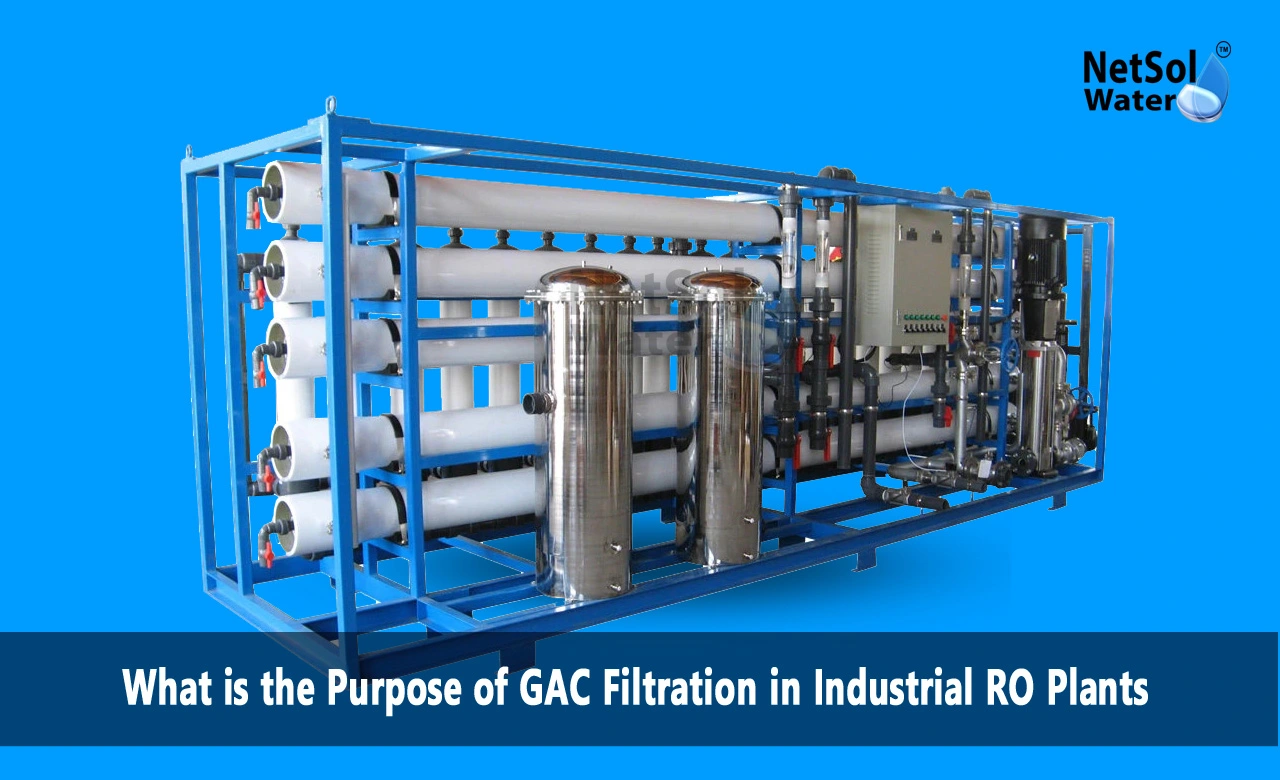What is the Purpose of GAC Filtration in Industrial RO Plants?
Water treatment is a crucial process in various industries, and one of the key components in water treatment is filtration. Among the different types of filtration, granular activated carbon (GAC) filtration plays an essential role, particularly in industrial RO plants. We will explore the purpose of GAC filtration in industrial RO plants, covering its role in the water treatment process, its benefits, and its applications.
The Basics of GAC Filtration
Granular activated carbon, often referred to as GAC, is a form of activated carbon that consists of tiny porous particles. These particles possess a vast surface area and are excellent adsorbents for a wide range of substances. GAC is commonly used as a filtration medium in water treatment processes.GAC filtration involves passing water through a bed of activated carbon particles, allowing for the adsorption (attachment) and removal of various contaminants from the water. This process is achieved through two primary mechanisms:
1) Adsorption: GAC has a highly porous structure, which allows it to adsorb or attract different types of molecules onto its surface. This process helps to remove contaminants from the water.
2) Biological Filtration: GAC also acts as a biological filter, supporting the growth of certain bacteria that can break down and remove organic matter from the water.
Let's explore the different stages of GAC filtration and how it relates to industrial RO plants.
1) Pre-Filtration Stage
In industrial RO plants, GAC filtration is often employed as a pre-filtration step before the reverse osmosis (RO) process. GAC filtration serves two main purposes at this stage:
a) Removal of Contaminants: GAC effectively removes various contaminants from the water, such as residual chlorine, organic matter, and certain heavy metals. This process protects the RO membranes from potential damage caused by these contaminants, reducing the risk of membrane fouling and extending the operational lifespan of the RO system.
b) Biological Filtration: GAC supports the growth of certain bacteria, which can help control microbial growth in the water. These bacteria also assist in breaking down and removing biodegradable organic matter from the water.
2) Biological Treatment Stage
GAC is often used as a biological filter to remove biodegradable organic matter from water sources. This is achieved through a process called adsorption, where organic matter is adsorbed onto the surface of the activated carbon particles. The adsorbed organic matter is then gradually broken down by naturally occurring bacteria, which utilize the organic matter as a food source. GAC acts as a supporting matrix for these bacteria, providing attachment sites and promoting the growth of a active biological filter.This biological treatment process helps to remove dissolved organic matter from the water, reducing the organic load and minimizing the risk of membrane fouling in the downstream RO process. Additionally, this process improves the quality of the water, making it less susceptible to bacterial re-growth and minimizing the risk of contamination in the water distribution system.
A. Removing Organic Matter from Water Sources
1) Absorbing and Retaining Organic Matter
GAC has a high adsorption capacity, which allows it to remove various organic compounds from water sources effectively. These organic compounds, often referred to as "precursor contaminants," are adsorbed onto the surface of the GAC particles. This process improves the quality of the water by reducing the organic matter load, which minimises the formation of hazardous disinfection by-products.
2) Biological Degradation and Adsorption of Organic Matter
GAC acts as a supporting matrix for the growth of certain naturally occurring bacteria, which can degrade and adsorb organic matter present in water sources. The bacteria utilize the organic matter as food, breaking it down into simpler compounds which are adsorbed onto the GAC particles. This biological degradation process, coupled with adsorption onto the activated carbon, effectively purifies the water by removing organic matter.
B. Controlling Bacterial Re-Growth
GAC Filtration can also help control bacterial re-growth in water sources. GAC supports the growth of naturally occurring bacteria, which form a biological filter on the GAC particles. These bacteria compete effectively against harmful bacteria, reducing their presence in the water. Furthermore, certain strains of bacteria attached to GAC are known to produce bactericidal substances which further inhibit the growth and survival of harmful bacteria in the water.
3) Disinfection Stage
At the disinfection stage, GAC filtration helps remove pathogenic bacteria from the water through three key mechanisms:
A) Adsorption
Pathogens like bacteria and viruses are adsorbed onto the GAC particles, removing them from the water by attachment.
2) Bacterial removal
Certain GAC-attached bacteria like Bacillus, Pseudomonas, and Aeromonas release bactericidal compounds which kill pathogenic bacteria, effectively removing them from the water.
3) Suppression of bacterial re-growth
GAC filtration helps control bacterial re-growth after water disinfection through two processes:
a) GAC's adsorbent properties capture and remove residual disinfectants like chlorine from the water, stopping disinfection and disinfectant carryover to the water distribution system.
b) Slow-reacting bacterial strains adsorbed onto the GAC slowly release bacteria into water for long-lasting residual water disinfection.
4) GAC Filtration for Air Purification
GAC Filtration also acts as an air purification system by absorbing airborne contaminants like dust, odours, gases, and airborne microbes into the activated carbon. This process improves indoor air quality by controlling harmful airborne particles and microorganisms.
Conclusion
GAC filtration is a versatile technology that offers effective solutions for water purification, contaminant removal, and air purification. By carefully implementing and maintaining GAC filtration systems in industrial RO plants, industries can contribute to a cleaner, safer environment while also achieving operational efficiency and cost savings.
To explore customised commercial RO plants, Industrial RO plants, ETP or STP solutions for your needs in your areas and nearby regions, contact Netsol Water at:
Phone: +91-965-060-8473, Email: enquiry@netsolwater.com



